
Happy March 28th! Do something to make somebody smile today. Don't just think about it........do it. Then think about it.............and how you just made somebody's world a tiny bit greener.
Our local chess tournament earlier this month got some great coverage. I'm extraordinarily proud of the kids and also the adults that helped run this event:
Scroll down and enjoy the latest comprehensive weather to the max. Here's the latest weather..... occurring because of the natural physical laws in our atmosphere. Potential for excessive rain event late week 2 from the S.Plains, east/northeast!
Here are the latest hazards across the country.
Purple/Pink/blue on land is cold/Winter weather. Brown is wind, Green is flooding. Gray is fog. Reddish is a red flag advisory.
Go to the link below, then hit the location/county on the map for details.
https://www.spc.noaa.gov/ Go to "hazards"

Wind map Hit this with your cursor:


Wind map Press down on this on the left with your cursor!


Current Jet Stream

Winter Weather
https://www.wpc.ncep.noaa.gov/wwd/winter_wx.shtml
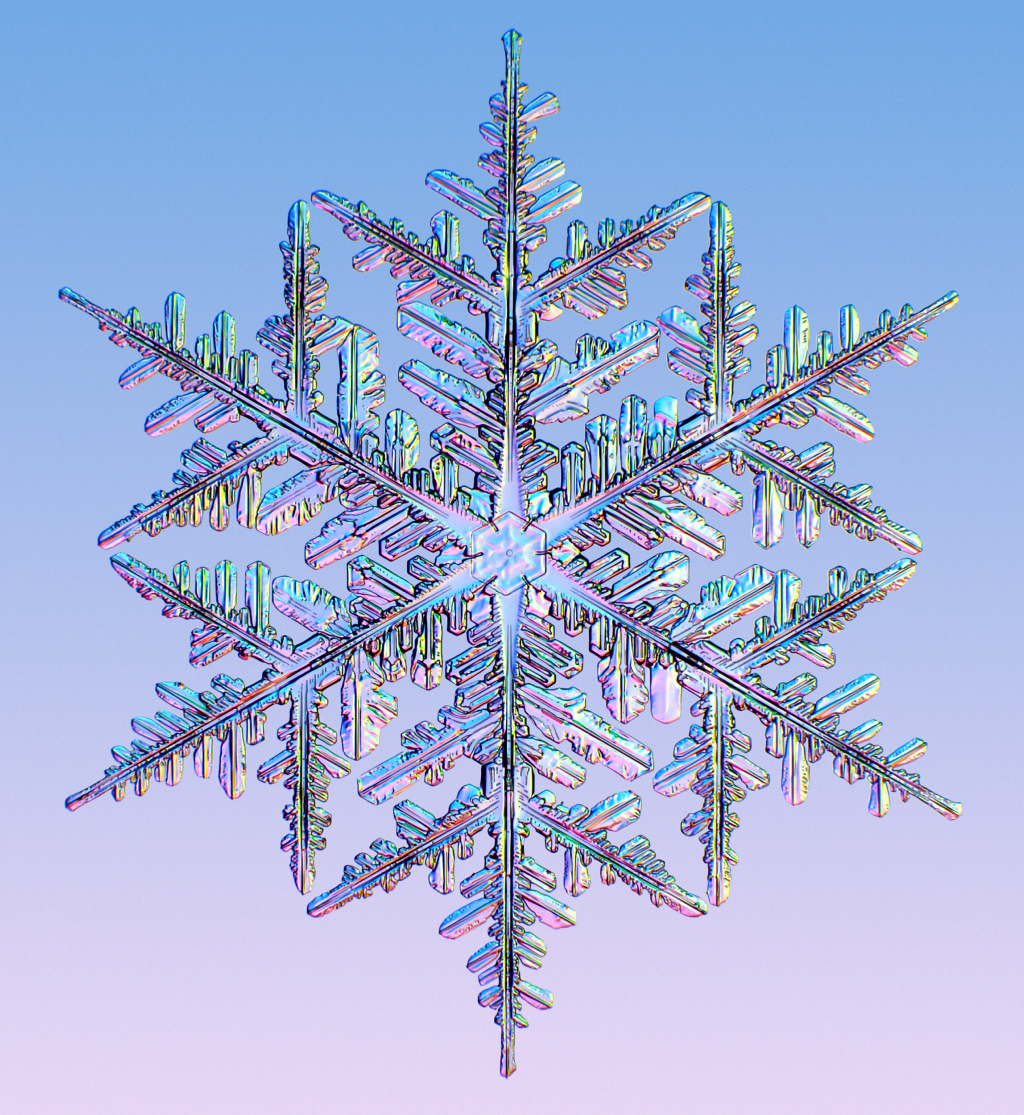
Snowfall the next 3 days:
Forecast Hour: 072
Image URL: http://mag.ncep.noaa.gov/data/nam/12/nam_namer_072_snodpth_chng.gif
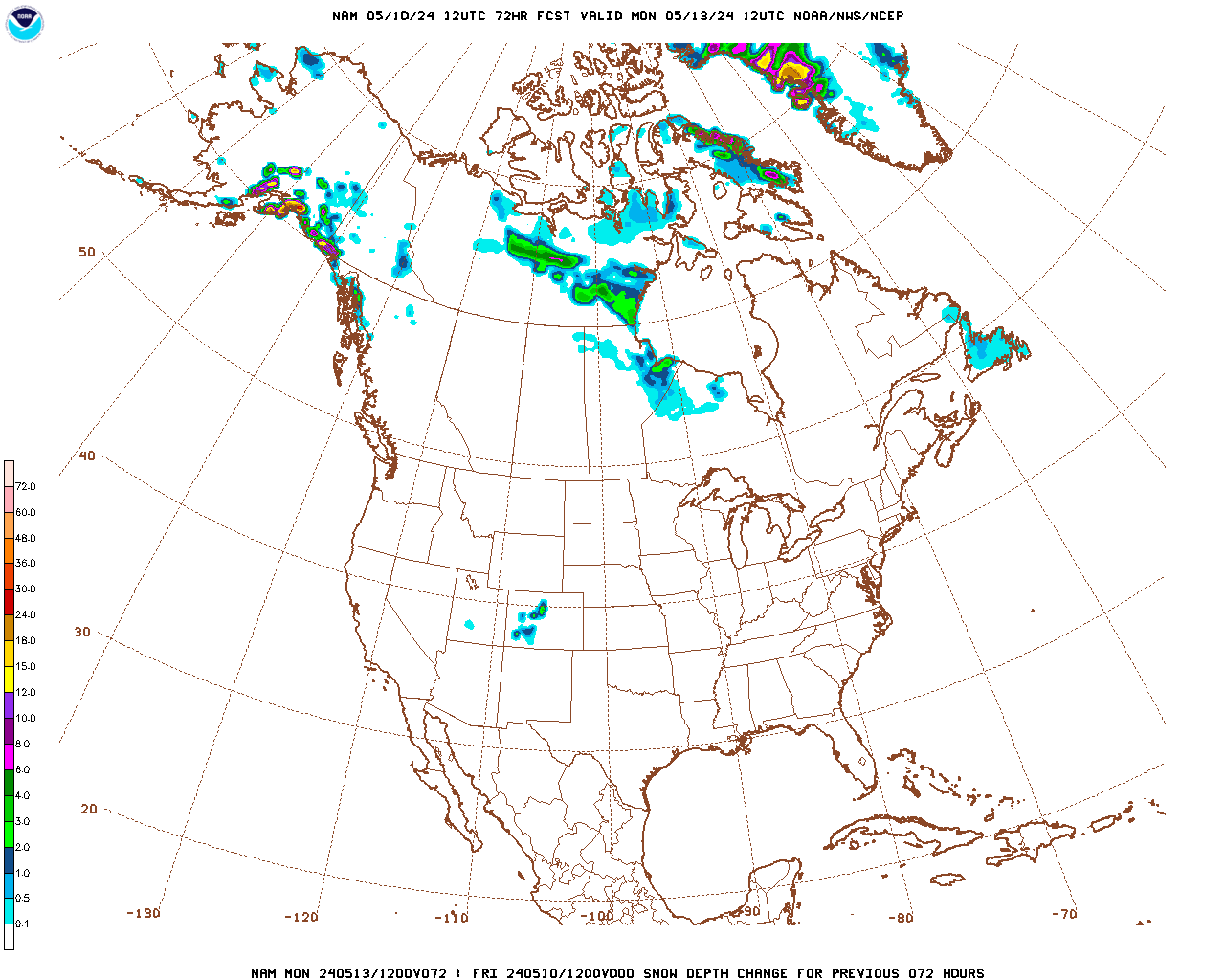
| Low Temperatures Tomorrow Morning |

Highs for days 3-7:
Chilly shot, followed by slow moderation next week.
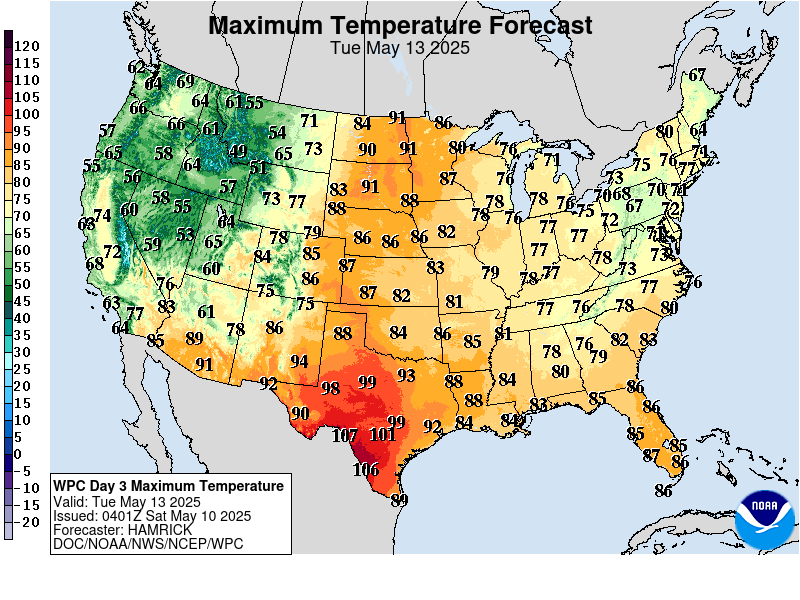
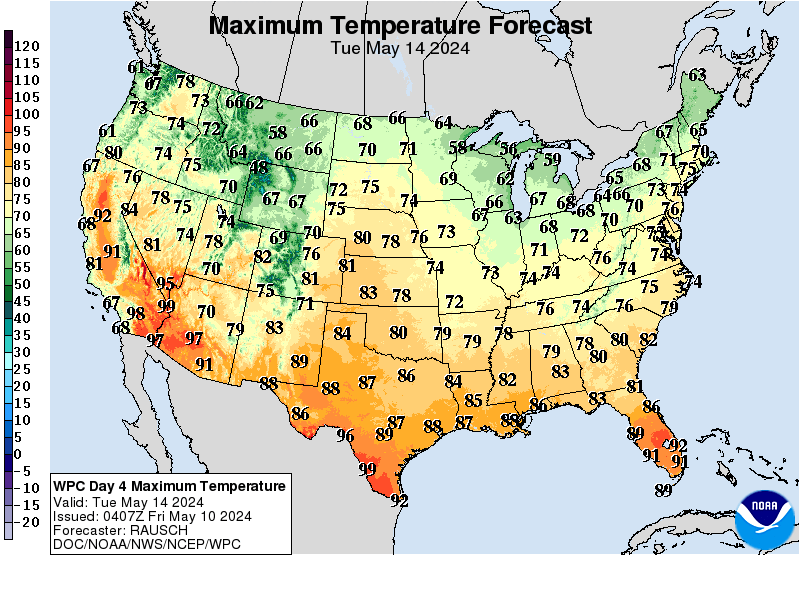
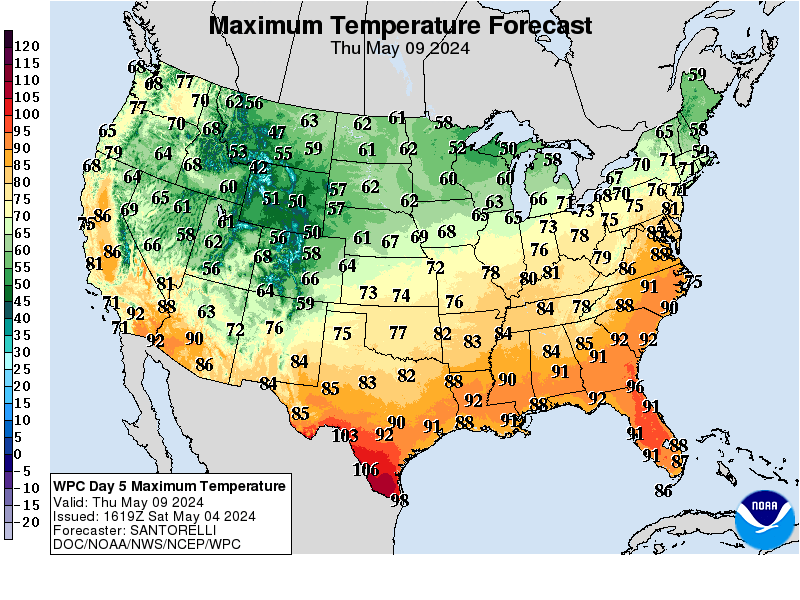
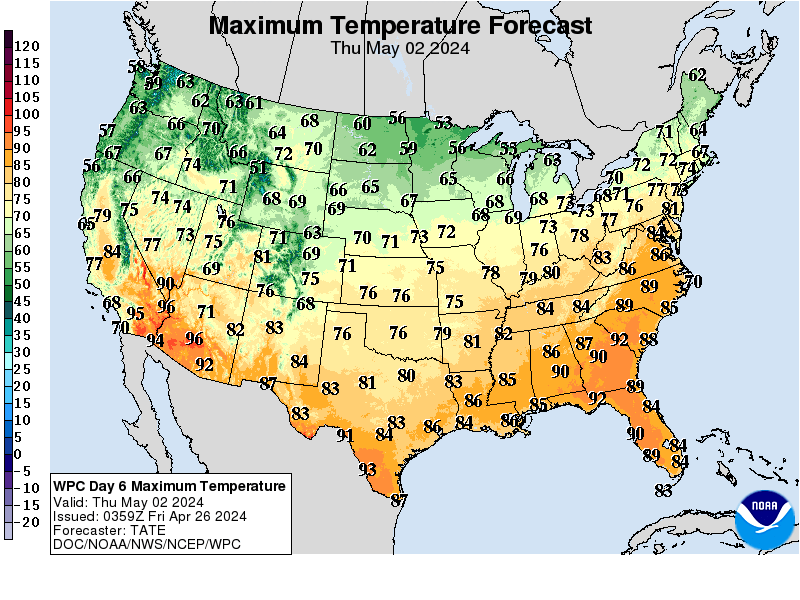
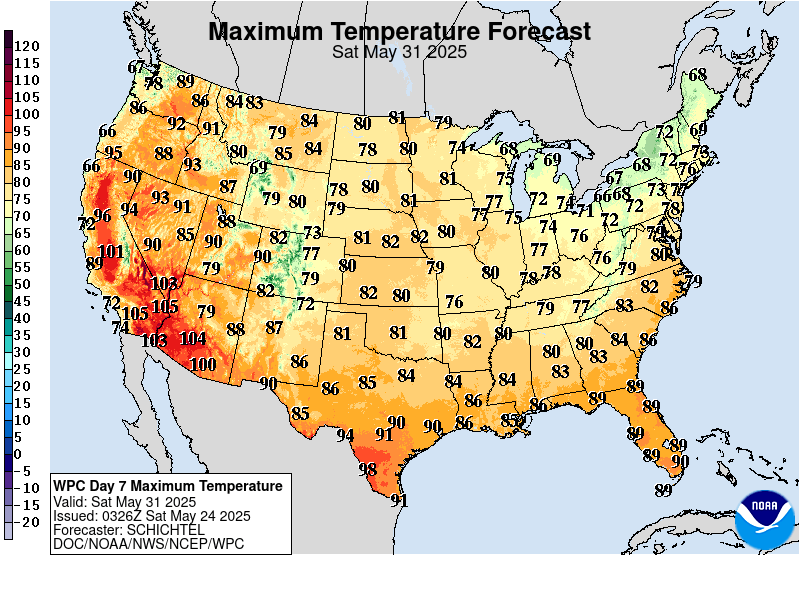
How do these days 3-7 temperatures compare to average at this time of year?
Starting chilly, then moderating but not far from average!
https://www.wpc.ncep.noaa.gov/medr/medr_mean.shtml
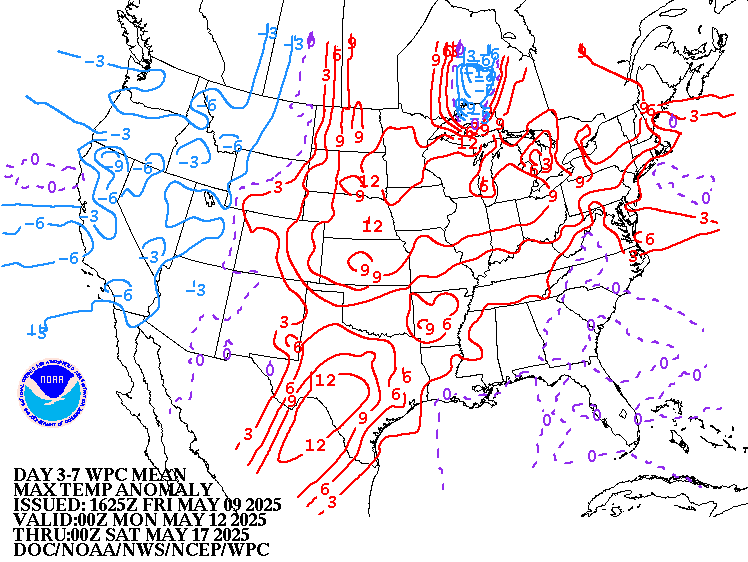
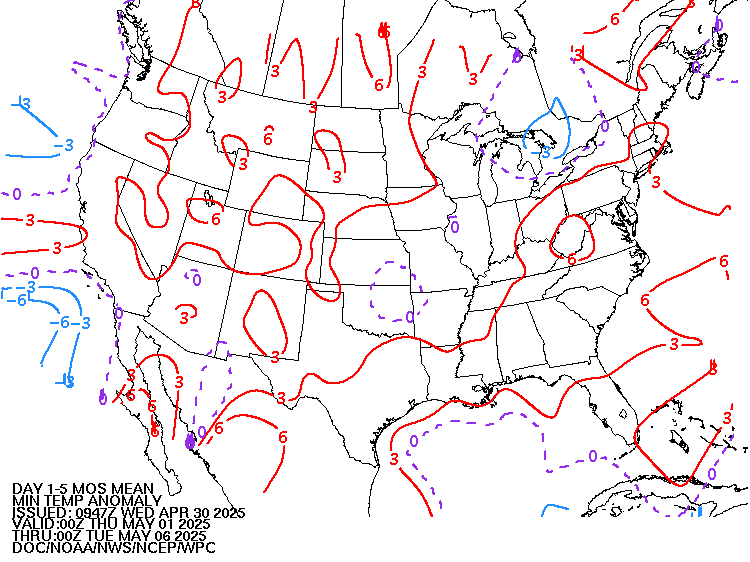
Weather maps for days 3-7 below
Saturday system departs, followed by a couple of dry days with chilly Canadian High pressure then slow moderation with a weak cold front in the Plains/Upper Midwest next week.
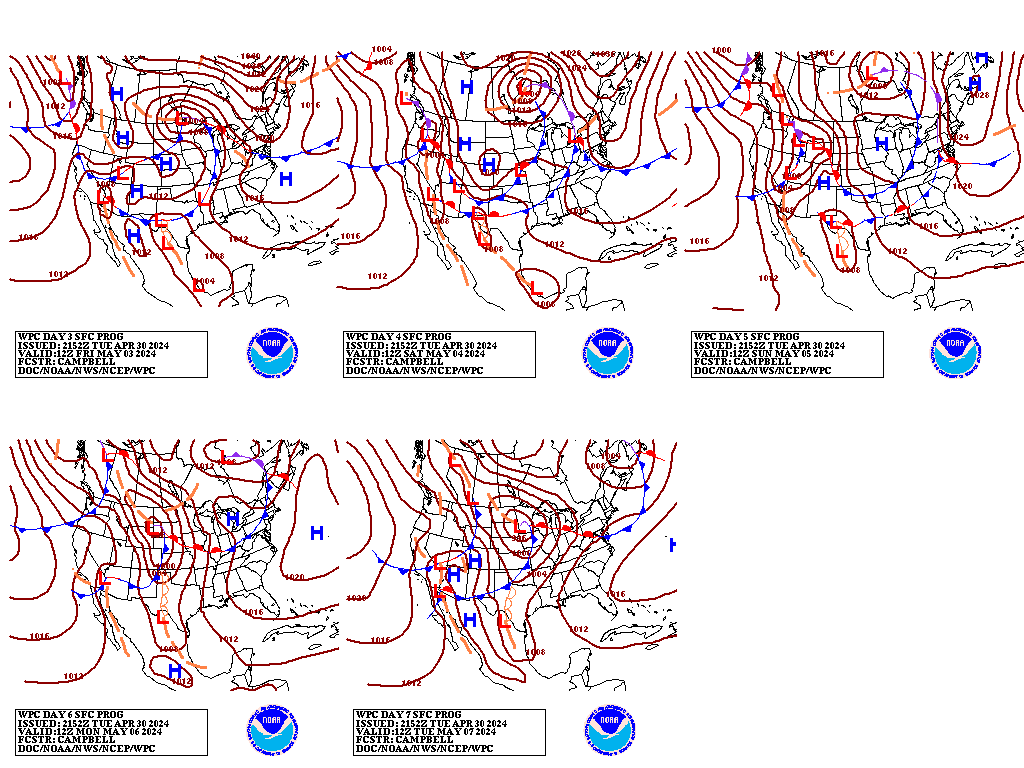
Liquid equivalent precip forecasts for the next 7 days are below.
Rains with the current system miss the Upper Midwest.........wet in the Southern/Eastern Cornbelt with this big system the next 2 days. Then a couple of dry days to follow...........then a weaker system next week that also effects the northern belt.
Day 1 below:
http://www.wpc.ncep.noaa.gov/qpf/fill_94qwbg.gif?1526306199054
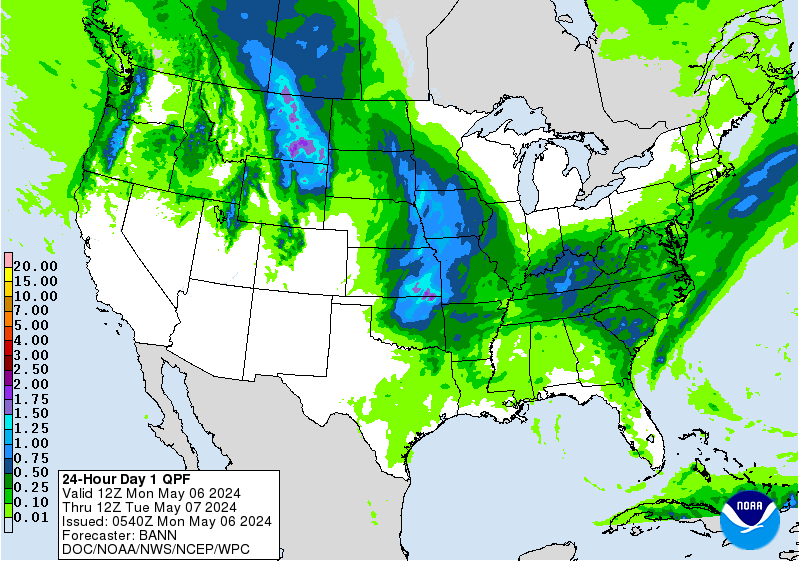
Day 2 below:
http://www.wpc.ncep.noaa.gov/qpf/fill_98qwbg.gif?1528293750112
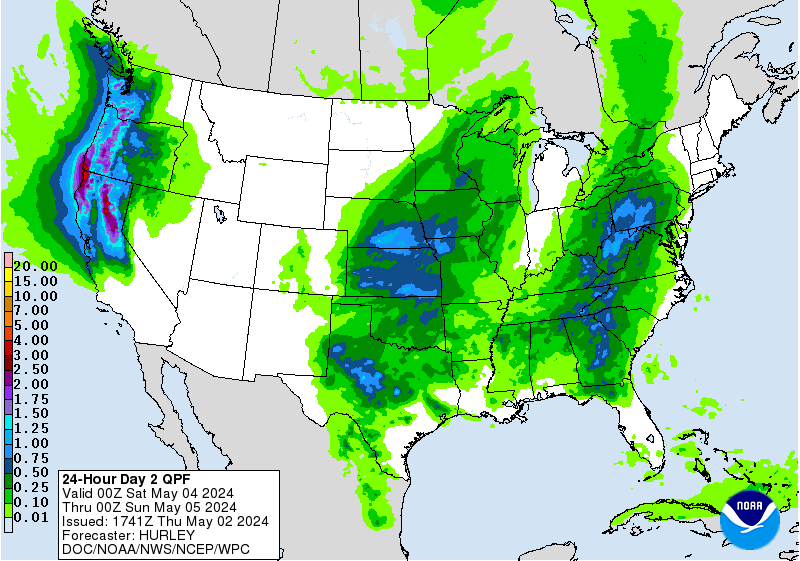
Day 3 below
http://www.wpc.ncep.noaa.gov/qpf/fill_99qwbg.gif?1528293842764
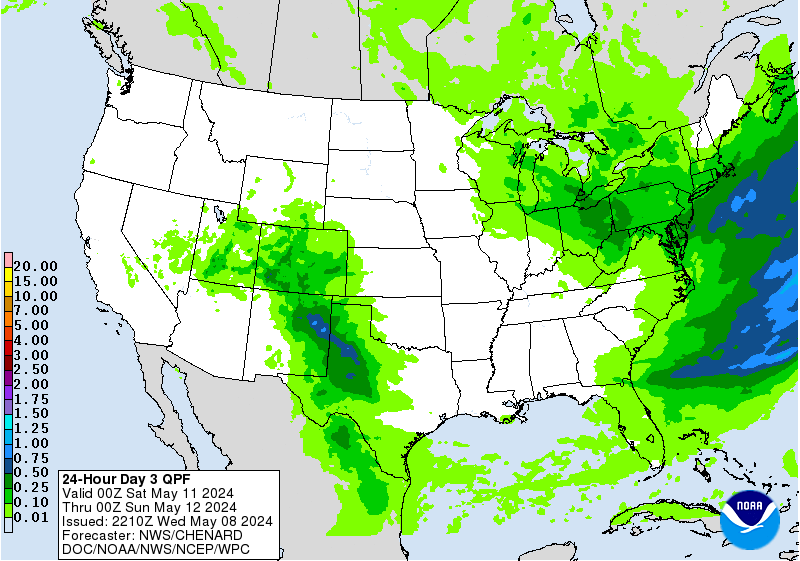
Days 4-5 below:
http://www.wpc.ncep.noaa.gov/qpf/95ep48iwbg_fill.gif?1526306162
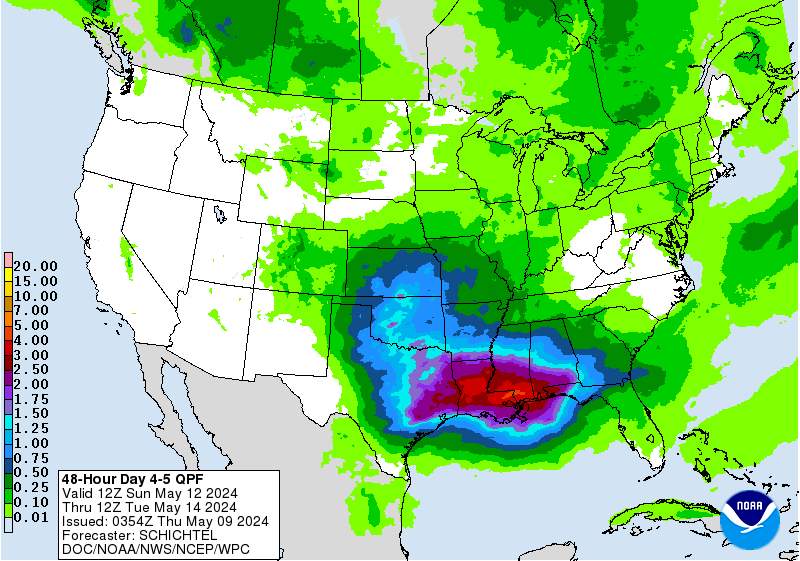
Days 6-7 below:
http://www.wpc.ncep.noaa.gov/qpf/97ep48iwbg_fill.gif?1526306162
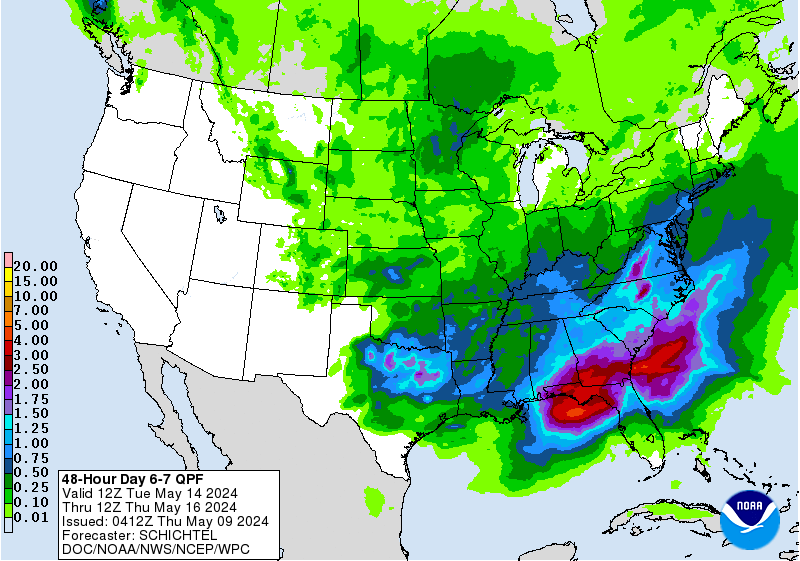
7 Day Total precipitation below:
http://www.wpc.ncep.noaa.govcdx /qpf/p168i.gif?1530796126
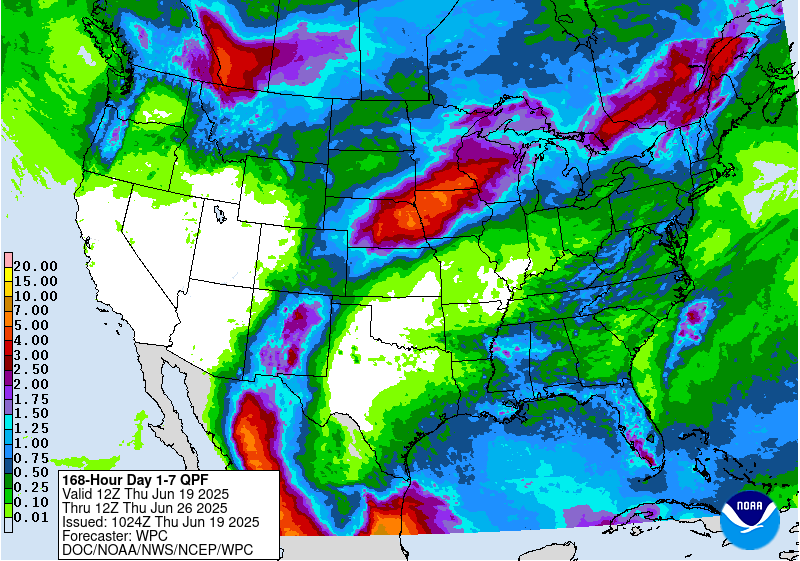
Current Dew Points
Moisture returning into the Midwest to be used for upcoming rains!

Latest radar loop
http://www.nws.noaa.gov/radar_tab.php

| Full resolution version loop (3400x1700 pixels - 2.2mb) |

Go to: Most Recent Image
You can go to this link to see precipitation totals from recent time periods:
https://water.weather.gov/precip/
Go to precipitation, then scroll down to pick a time frame. Hit states to get the borders to see locations better. Under products, you can hit "observed" or "Percent of normal"
+++++++++++++++++++++++++++++++++++++++++++++++
+++++++++++++++++++++++++++++++++++++
Precipitation compared to average for the last 7, 14, 30 and 60 days.
Usually not updated for previous day until late the next day.
https://www.atmos.illinois.edu/~snodgrss/Ag_Wx.html




https://www.marketforum.com/forum/topic/25818/
Currently, there is 0% of the Cornbelt/Midwest with drought. There is no place even slightly dry there or east of the Rockies, other than in TX and the far Southeast.
I am pretty sure that this has never happened since records have been kept. The market will be keying on precip forecasts for planting concerns for the next month.
https://droughtmonitor.unl.edu/
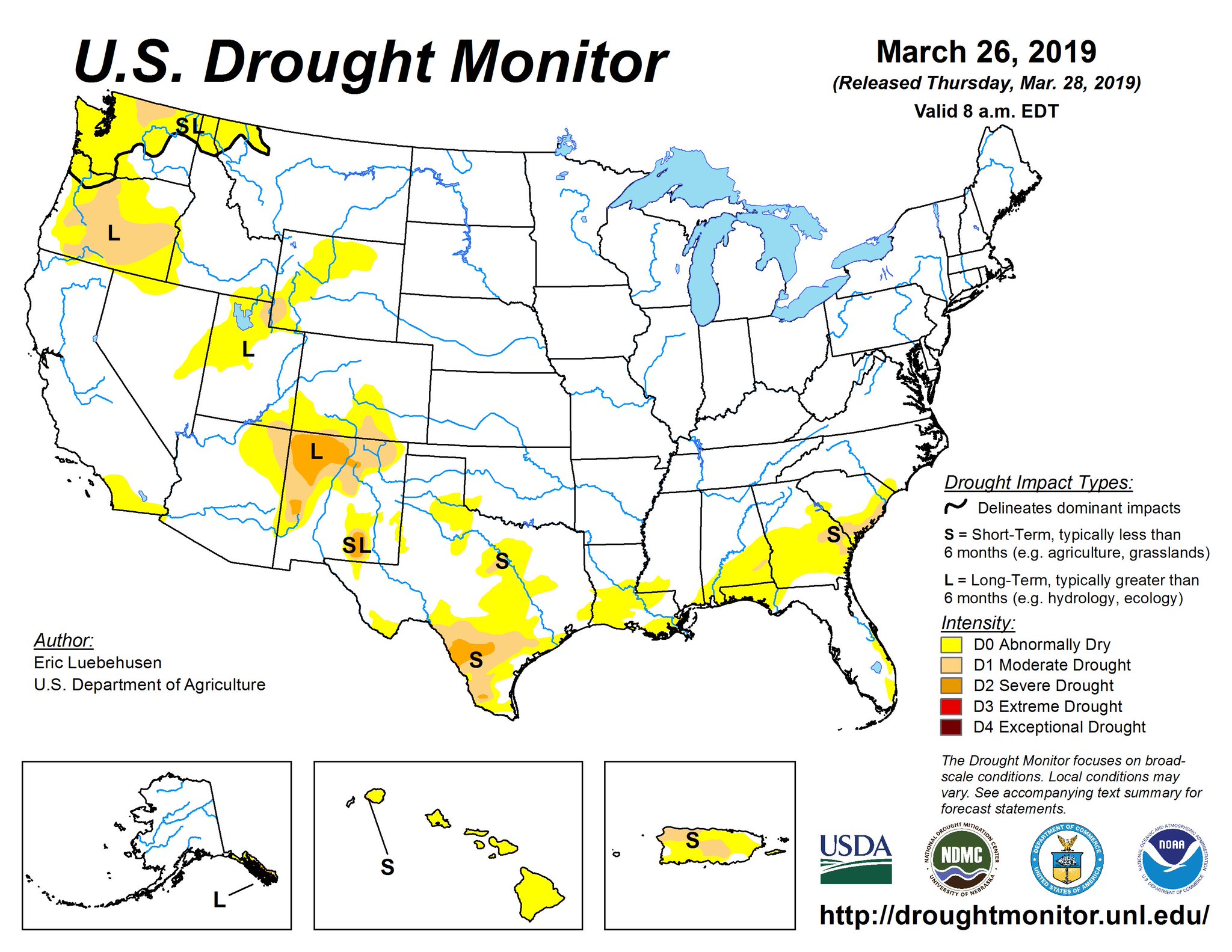
The top map is the Canadian ensemble average, the maps below are the individual members that make up the average
+++++++++++++++++++++++++++++++++++++++++
Each member is like the parent, Canadian model operational model.......with a slight tweek/variation in parameters. Since we know the equations to represent the physics of the atmosphere in the models are not perfect, its useful to vary some of the equations that are uncertain(can make a difference) to see if it effects the outcome and how.
The average of all these variations(ensembles) often yields a better tool for forecasting. It's always more consistent. The individual operational model, like each individual ensemble member can vary greatly from run to run.........and represent an extreme end of the spectrum at times. The ensemble average of all the members, because it averages the extremes.............from opposite ends of the spectrum.........changes much less from run to run.
End of week 2....................0z ensembles from THURSDAY:
Analysis starting from a week ago, ending with today:
Last week+ of analysis, starting with the day farthest in the past:
Last Monday: Not much change from Sunday. The noted feature is the southern stream trough from the Southwest to S.Plains and its potential to cause wet weather to the east.
Tuesday: A few members trying to invigorate the northern stream which shows up in the mean as sort of a northwest flow in Canada but still not deep enough south to be dominant in the US............where the southern stream will rule. The modest northern stream cold that invades is actually around a week before this late week 2 period.
Wednesday: Very active. Many different solutions. Southern stream dominates but northern stream feeding cold into N/C Canada is looking much more impressive today. Will any of that cold make it into the US??
Thursday: Not that different than yesterday except with regards to N.Canada. Yesterday is looked like frigid air would dump in to that location from Siberia, today, the cross polar flow connection is not as impressive for that region but it's still cold in Canada.
Friday: Looks slightly milder to me and also not as wet in the northern half.....compared to yesterday.
Monday: It's all southern stream, Energy from the El Nino driven active south Pacific wil be aimed towards the central and souther US. The question is NOT will it be wet with this pattern but HOW WET and HOW FAR north and west will the wet pattern be? The N.Plains and far Upper Midwest will not be as wet.
Tuesday: Similar to yesterday. The mean looks zonal and for sure dials out any northern stream influence, so temperatures should be mild. The individual solutions still show a lot of potential southern stream activity and precipitation but are not quite as wet today.
Wednesday: Potential for heavy precip and possible excessive rain event(s) from the El Nino driven southern stream late week 2.
Thursday: I still see the threat of heavy rains. The more amplified the ridge in the east becomes, the heavier the rains.
360h GZ 500 forecast valid on Apr 12, 2019 00 UTC
0Z GFS Ensembles at 2 weeks:
Analysis, starting with a week ago:
Last
Monday: Still high potential for an active southern stream.
Tuesday: A few now with northern stream action, especially prior to these late week 2 maps. Southern stream still much more active.
Wednesday: Very wet and active southern stream. Very cold air pooling in Canada., well north of the US.
Thursday: Not much change with more ridging now in the far S.Plains to Southeast underneath the active southern stream.
Friday: Active Pacific origin systems but they may not have opportunities to amplify if the flow is a fast, mostly mild flow from west to east.
Monday: Active southern stream, high confidence............ for this far out at least.
Tuesday: Some solutions are looking drier.
Wednesday: Southern stream looking especially active late week 2 on this mornings solutions. Deep trough to cut off low in the S.Plains.
Thursday: This particular batch of solutions does not look as wet as the 0z Canadian model ensembles to me but the run after this, 06z GFS ensembles looked wetter.

Ensemble mean(average of all the individual solutions above)
Last
Monday: Upper level anomolies have shifted the past 2 days from ridge/west, trough east to trough/west, ridge east. The means warmer in the East, colder in the West but not northern stream cold. It's also the signature for the potential for widespread precip, depending on where the departures line up.........warm/moist air transported north from the Gulf of Mexico and Pacific energy from the trough aimed towards that moisture.
Tuesday: At this period, the mean shows little threat for very cold air from the northern stream. A new big anomaly center it up in Siberia but without a connection south/southeast(troughing) downstream to feed that cold across Canada into the US. The anomalies in the US, favor wet weather.........like yesterday.
Wednesday: The Siberian High connects to lower heights downstream in N. Canada where cold air will collect......down to central Canada. A positive anomaly in the Northeast will make it tough for the cold to penetrate into the US..........but things are changing fast on updates.
Thursday: With the big positive upper level height anomaly in the Northeast, it will make it almost impossible for cold air masses to penetrate very far south for more than a brief shallow intrusion in that region. This, along with a negative anomaly off the West Coast is the recipe for widespread precip aross the much of the country.......from the southern stream.
Friday: Positive height anomaly in the Northeast but it extends westward across the Northern Tier, which might be a precursor to drier weather there and the southern stream being aimed farther south.
Monday: Positive height anomaly in the Great Lakes means mild weather. Extension of that westward....possibly protecting that area from the wet southern stream which will define the (WET) weather over much of the US.
Tuesday: One noteworthy and potentially huge change. The negative anomaly in the West has been shifting farther west............now out in the East Pacific and growing. This could be so far west that it induces downstream ridging farther west and shifts the storm track far enough west so that the Gulf of Mexico is not wide open all the time. This is why my extended range forecast is a bit drier today, taking this into account.
Wednesday: Similar anomalies to yesterday but my analysis, suggesting a potential to turn drier may be flawed. This, because of the new negative anomaly in the S.Plains, induced by energy eminating from an El Nino drive southern stream. This, in combo with the positive anomaly in the Northeast, spells very wet weather for the S.Plains and points northeastward. Potential for excessive rains(more favored in southern locals at this time) with the Gulf of Mexico wide open.
Thursday: A growing new positive anomaly in N/C Canada on this run. Will it mean anything with regards to the northern stream down the road? Southern stream and heavy rain threats are still the main show for the US, especially around the S.Plains and points east.
Latest, updated graph/forecast for AO and NAO here, including an explanation of how to interpret them.
Previous analysis, with the latest day at the bottom for late week 2 period.
Last
Tuesday: The AO and NAO are not nearly as positive as yesterday and just barely above zero at times............a bit more favorable for cold, especially prior to this period. The PNA stays a bit positive.........ridging in northern North America.
Wednesday: Volatility in the indices and a fairly wide spread..........so there is uncertainty. AO drops, now a few are negative at 2 weeks, so there is a decent chance of cold at the highest latitudes moving south at this time(how far south? is the question) NAO also falls then but still just above zero, so cold may be more favorable to the west. PNA is slightly positive.
Thursday: The volatility and lack of dependability in this indices continues. The AO drops off a cliff now at the end of 2 weeks. With extreme spread from, remaining positive to really negative. The NAO drops to a bit negative. These indix values suggest an increase for cold to get south from higher laitutudes. The PNA is around zero but also has massive spread.
Friday: AO drops to close to zero(higher than yesterday) from positive with much less spread. NAO a bit positive..........this is not favorable to cold air to travel south from high to mid latitudes. PNA close to zero............but it's April and these indices are loosing significance in their ability to suggest strong tendencies for the movement/destination of air masses.
Monday: AO drops hard at the end of 2 weeks from positive. NAO stays solidly positive.......making it tough for cold to penetrate deeply into the US and being favorable for wet weather. PNA is barely positive at the end of 2 weeks.
Tuesday: AO drops hard to slightly negative. NAO and PNA are positive at the end of 2 weeks. It's the time of year when these indices are not as powerful as indicators for temperature trends in the US compared to a couple of months ago. However, the NAO/PNA can sometimes suggest a pattern that helps with precip. If we get a strongly negative NAO for instance, it often suppresses Gulf of Mexico moisture from maintaining a constant presence in the Midwest.
Wednesday: AO plunges to negative with very wide spread. NAO is mostly positive but not entirely with wide spread. PNA stays slightly positive with wide spread. Looks like potential for big changes and possibly a lot of action as we get into the 2nd week of April!!!
Thursday: AO drops to a bit negative. NAO drops to a tad positive from strong positive. PNA increases a great deal into positive territory late in the period. If this were January, one might be watching for a change to colder.
The link below, now has the PNA index added at the bottom:
https://www.marketforum.com/forum/topic/157
National Weather Service 6-10 day, 8-14 day outlooks.
Southern stream will dominate. Potential for excessive rain event, especially south late in week 2.
Temperature Probability | |
Precipitation Probability | |
| the 8-14 day outlooks ArchivesAnalogsLines-Only FormatGIS Data | |
Temperature Probability | |
 | |
Spring outlook from the NWS.
This is a HUGE deal to the grains, especially corn because planting, ideally can get going by the end of April and needs to be done in May.
Many traders/forecasters are drawing similarities to 1993 and the historic flooding of that year because that was the last time conditions were like this.
Each year is different. One thing is certain. The market will NOT be concerned about drought during planting and the early parts of the growing season. Surface and subsoil moisture is completely recharged almost everywhere.
